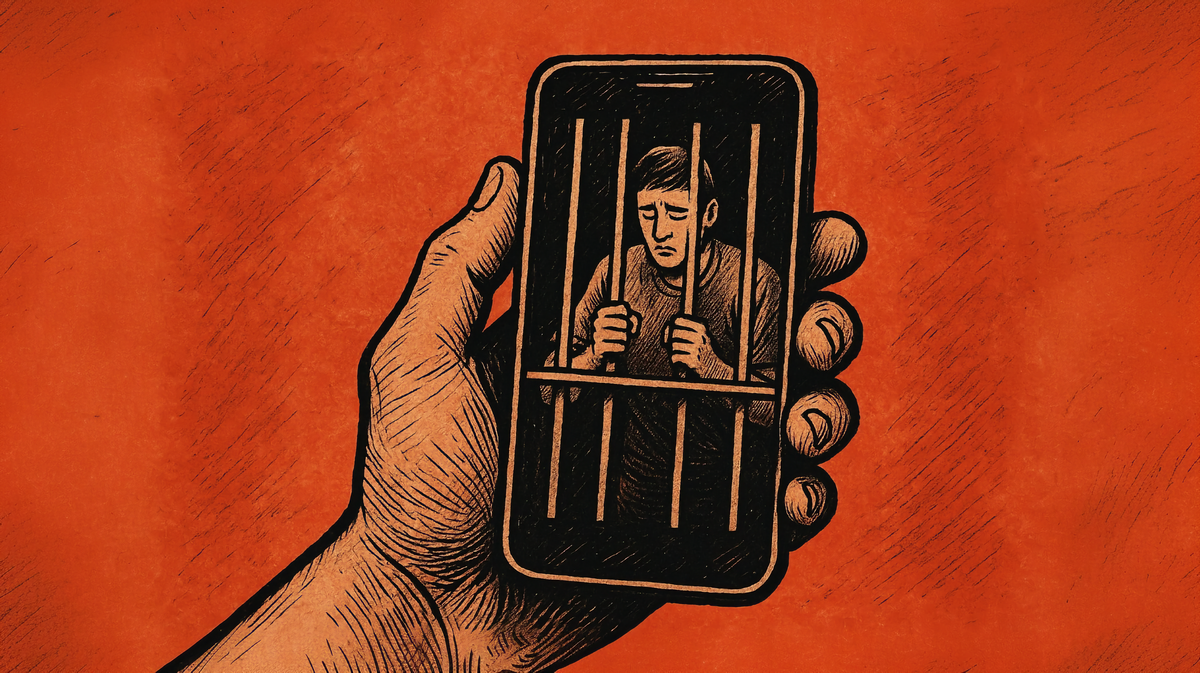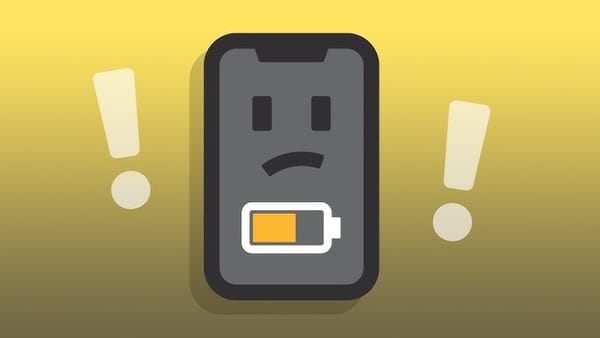Cut Screen Time, Fix Your Attention Span: Get More Life Back
Cutting screen time isn’t about deprivation it’s about liberation. Reclaim your attention, your time, and your ability to fully engage with life.

What if you could add a third of your waking hours back to your day?
Not by sleeping less, not by working harder, but by simply shedding a burden you didn’t even realize you were carrying.
Imagine an extra five or six hours.
What would you do with that time?
What could you accomplish?
It sounds like a magic formula, a pipe dream, but it’s entirely within reach. The “secret”? Cutting down your screen time.
This isn’t a hoax; it’s a direct exchange: less time glued to a screen, more time for living.
1. The Silent Saboteur: Your Device’s Grip
Let’s be honest: you know your relationship with your phone is problematic.
Even the most disciplined among us use these devices far more than we’d like. Whether for work or leisure, the phone has become a phantom limb, constantly demanding attention.
What snapped me out of it was confronting the raw data: hundreds of hours funneling into that small rectangle, with little to show for it. That lack of control was the catalyst.
I wanted ownership again over my attention, to direct it intentionally, not burn it for nothing.
Sure, essential communication and critical apps exist. Their necessity varies for everyone. But the rest?
Much of it is parasitic.
It doesn’t contribute to genuine progress.
Even if an app could be useful, if it requires constant, passive checking, it’s a net drain.
The core issue: we’re spending more time than we need to, and the primary culprit is almost always social media.
If you’re intentionally using screen time for pure escapism, like mobile gaming to kill pre-determined free time, you might think this article doesn’t apply to you. You’d be wrong. While your reasons may differ, the core principles of regaining intentionality and focus will help you, too.
So whether you’re caught in the endless scroll or just seeking a more intentional existence, welcome back. We have advice for you.
Cutting the Cord: Immediate Actions
First, the obvious, non-negotiable steps:
- Delete the apps. If they’re not on your phone, you can’t mindlessly open them. Use browser versions if truly necessary, but make it inconvenient.
- Set a hard limit. If you absolutely can’t delete, then strictly enforce a time limit for social media. One hour maximum, total.
- Implement “Mindspaces” (Zoning Rules): This is non-negotiable. Each part of your living space gets a designated function, and only that function. This means no phone in the bedroom, bathroom, or kitchen. Seriously. If you consistently nail these three rules, you’re 75% of the way there. It’s simple, but the resistance you’ll feel underscores its power. Many will relapse, but persistence is key.
Beyond the Basics: Cultivating Stillness
Now, let’s talk about building true immunity, eliminating the need for constant digital distraction, and cultivating a genuine aversion to it.
We want you to reach a point where mindlessly grabbing your phone feels like a bad habit you’re allergic to.
To start, reintroduce a foundational tool into your arsenal: stillness. Or, simply, boredom.
Yes, you need to allow yourself to be bored again. The phone is our primary drug for remedying boredom, but it also starves our minds of something vital.
This isn’t about staring at a wall for hours; it’s about reclaiming those small, interstitial moments.
The times you automatically reach for your phone: in the bathroom, waiting for coffee, brushing your teeth, doing dishes, walking the trash out. There are countless tiny opportunities throughout your day.
Your mission: slowly, deliberately, make a few of these activities phone-less.
Leave the device on your desk, in your pocket, anywhere but in your hand. Just be with the boredom.
Notice how your brain starts to churn, looking for something to do.
That’s instinct. Your brain resists being bored, and in that resistance, it reawakens curiosity, two capacities severely inhibited by constant phone stimulation.
Stillness lets your brain take the spotlight again.
No matter how arbitrary the task you find to replace the phone, it’s yours again.
The Weaponized Relapse: Intentional Distraction
Now that you’ve put in the work creating space from your device, reclaiming the power of boredom, and allowing your mind to breathe, it’s time for a strategic relapse. Yes, pick up that phone.
But this time, it’s different.
This time, it’s intentional.
I want you to make it feel like a chore, much like that task you were avoiding with your full attention.
This isn’t for those still struggling with basic phone separation, still caught in the early stages we mentioned before; this is for those who’ve begun to hone their ability to exist without it.
The premise: force yourself to use it, consistently, but only within a pre-determined, dedicated block of time.
No other distractions.
No multitasking.
You’re not killing spare minutes; you’re actively setting aside time for social media.
Sit down, focus only on scrolling, on watching videos, on engaging with whatever digital feed you choose.
Make it your sole activity for that allocated period.
Notice how even reading that feels absurd, difficult.
This is the drug becoming its remedy.
By forcing yourself to engage with the distraction distraction-free, you’ll find it incredibly difficult.
You’ll crave interruption.
Your brain, designed for true engagement, will resist the emptiness of passive consumption when it’s your only task.
This process starts to rewire your perception.
That endless scroll, when confronted head-on without external escape routes, begins to reveal its true nature: a time sink, a hollow activity.
It will start to feel like toxic waste, leaving a bitter taste.
You’re exposing the dopamine hit for what it is, a quick, empty surge, without the usual camouflage of background noise or other tasks.
You might be noticing something unsettling now, even without your phone constantly buzzing.
You’re still struggling to focus.
What else, beyond the device, is stealing your clarity? This takes us to the second, deeper layer of the problem.
Part 2: Your Shattered Attention Span
In today’s hyperactive, flashy, and loud world, everything is engineered for immediate attention and maximum retention.
It’s woven into the very fabric of how we consume information and entertainment. This relentless pursuit of your gaze has fundamentally rewired our brains, making sustained focus on a single task feel nearly impossible.
The phone, as we’ve discussed, is a primary culprit, but it’s part of a larger ecosystem.
Social media, in particular, thrives on short, quick videos and immediate gratification, designed to hook your attention within the first few seconds.
This isn’t limited to social media; articles now favor catchy hooks, honestly, I’d be surprised how many people make it through an article this length without that constant formatting for reader retention.
Songs peak in their first chorus, and even films front-load their spectacle, often leaving the rest of the experience feeling hollow.
It’s all about instant hits.
Then there are the apps themselves, meticulously designed for “retention,” literally, keeping you locked in for as long as possible by reducing all resistance.
They optimize for endless engagement.
But the moment you look up from that curated, accelerated world, the real world’s pace returns to normal.
Tasks unfold sequentially, with a beginning, middle, and end that cannot be skipped or fast-forwarded.
That’s the core of the problem.
Sure, we can try to follow basic rules like not cross-contaminating activities (no phone while cooking, no watching TV while eating, no music in the shower).
The “Mindspaces” rule helps contain the phone.
But the deeper issue isn’t just environmental; it’s ingrained in our heads. Our brains are conditioned for constant, multiple stimuli.
This isn’t about tools, but about mental principles, about understanding the why more than just the what.
Boredom, in this context, isn’t the problem itself, but a symptom of a brain unaccustomed to single-point focus.
The simple truth is, we don’t want to divide our attention.
No matter how long or short the activity, each one deserves its own designated attention, its full brain allocation.
So, here are a few ways to reclaim that single-task focus.
The Micro-Fix: Optimize the Task, Not the Distraction
Here’s the critical shift: The problem isn’t that daily tasks are inherently long or boring.
The problem is that by splitting our attention, we stretch them out, making them feel tedious, and then we introduce more distractions to cope with the tedium we created. This is a toxic cycle.
Instead of trying to layer entertainment over a perceived chore, optimize the chore itself.
Your brain, once addicted to constant stimulus, has lost its capacity for efficient, focused execution on single tasks.
It’s not about remedying boredom with external input; it’s about eliminating the need for external input by making the task itself efficient and contained.
Audit Your Daily Rituals: Take a hard look at routine activities where you habitually split your attention. Are you listening to a podcast during every walk, watching videos while doing dishes, or letting music be a constant backdrop to every chore? This isn’t multitasking; it’s dual-tasking at a sub-par level. Your brain loses its ability to engage deeply with either.
Embrace Single-Tasking, Ruthlessly:
- The “Five-Minute Rule” for Tedium: Many chores are short. Do them in their designated time. A shower doesn’t need to be 15 minutes if you’re not deeply relaxing; it’s hygiene. Nobody needs a 10-minute trash run or 20 minutes for dishes. Eliminate the phone/music/podcast, and notice how these tasks shrink to a fraction of the time. The perceived “longness” of the task often vanishes with undivided attention.
- Eating is for eating: Watching a show while eating isn’t efficient. You’re neither fully enjoying the food nor fully absorbing the show. Eat your meal with focus, then separately enjoy your entertainment. It’s a fundamental break from a fragmented existence.
- Work Sprints, Not Marathons: If your work sessions require background noise or visual entertainment to maintain “flow,” you’re not in flow; you’re just distracted. This is the “task expands to fill the time allotted” principle in action. Instead of half-baked, distracted hours, commit to intense, uninterrupted 15, 30, or 45-minute sprints. Get up, take a real break, then return. Interrupt the monotony before it bleeds into your focus, not after.
The shift isn’t about making boring things fun. It’s about recognizing that most things aren’t inherently as boring as they seem; they just feel that way when our attention is diluted across multiple inputs.
When you commit your full focus to a single activity, no matter how mundane, it gets done faster, more effectively, and without the need for external crutches. That’s how attention returns: through repeated, intentional, single-task execution.
Part 3: Reaping the Benefits: A Reclaimed Existence
So, you’ve faced the screen, optimized the mundane, and begun the process of reclaiming your attention.
What’s the payoff?
It’s not just hours; it’s a re-engagement with your own life, your own mind.
It’s the silent accumulation of time and clarity you thought was simply gone forever.
Here’s your action list, your blueprint for consistent clarity:
- Delete the Apps: Make social media and other time sinks inconvenient. Browser versions only.
- Implement “Mindspaces” (Zoning Rules): No phone in the bedroom, bathroom, or kitchen. Period. Let spaces dictate focus.
- Embrace Stillness/Boredom: Reintroduce idle moments. Consciously leave your phone aside during short, everyday tasks. Train your brain to seek internal stimulus again.
- Practice Intentional Distraction: When you do use a screen, do it distraction-free for a dedicated block of time. Make the act of mindless scrolling a conscious, even uncomfortable, chore.
- Audit & Optimize Daily Rituals: Ruthlessly single-task your routine activities. Shower, eat, walk, clean, and give them your undivided attention. Cut out background entertainment.
- Work in Focused Sprints: Break long tasks into intense, uninterrupted bursts. Take true breaks. Interrupt monotony before it breaks your focus.
The True Payoff: Reclaiming Your Self
Once you integrate these practices, you don’t just “get hours back.” You reclaim fundamental aspects of yourself that have been neglected.
Chores, work, sleep, and eating, these are the constants, and their time contribution remains largely fixed.
What truly gets eroded by constant phone usage and a fragmented attention span is time for yourself.
It’s your “me time” that gets cannibalized.
It’s the quiet moments of reflection, the space for spontaneous thought, the capacity for true presence in your own life that is lost.
This isn’t just about productivity; it’s about freedom.
Stripping yourself of the ability to simply be with your own thoughts, to direct your attention freely, is a subtle form of self-abuse.
It leaves you with nothing, and that nothingness feels like a void.
For those who read this and think, “This doesn’t apply to me, I use my phone for escapism, for social anxiety,” this message is for you, too.
That reflex, that instinctive pull to the screen in moments of discomfort or uncertainty, exists because it’s a coping mechanism, not a solution.
Every time you face a difficulty and supplement it through the lens of a screen, you bypass the opportunity to understand, process, and ultimately learn to deal with that difficulty.
Here’s the blunt truth: escapism is temporary.
That avoidance in social situations is temporary.
One day, your phone won’t have battery, or it just won’t be there.
And in that moment, the world will feel like it’s caving in on you all at once.
Coming to peace with yourself isn’t easy.
But true peace, true self-possession, won’t be found by hiding behind a screen.
Be with yourself.
Allow those uncomfortable thoughts to simply be.
Write. Learn. Read.
Let your world expand beyond the confines of a glowing rectangle.
The larger your world becomes, the smaller and less intimidating that anxiety will feel.
This isn’t about giving up something; it’s about gaining everything.



